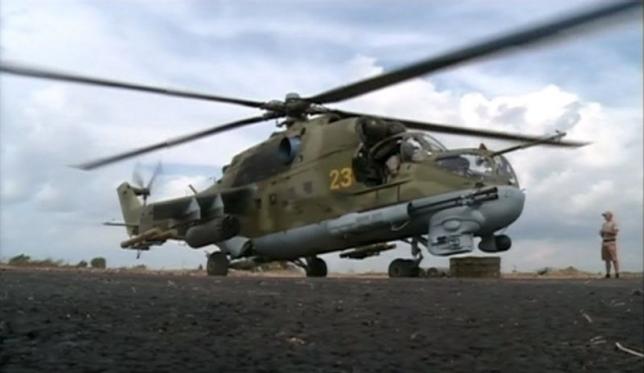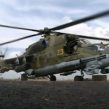
Russia’s Strategy of Limited Engagement in Syria: Progress, Tests and Challenges
Publication: Eurasia Daily Monitor Volume: 12 Issue: 199
By:

Since Russia’s President Vladimir Putin ordered the country’s air operations in Syria, Russian experts and commentators have attempted to interpret this policy shift. Putin and other members of the political-military leadership claim the intervention is limited to sending arms to Damascus and conducting air operations to support the Syrian Arab Army (SAA) and its allies on the ground. Identifying the exact nature of “enemy” forces proved elusive, however, as the campaign proceeds under cover of an effort to combat the Islamic State (IS). The Russian leadership appears resigned to the idea that the conflict is militarily unwinnable, but solaces itself in contrasting its meagre efforts with the utter failure of the United States’ air campaign (see EDM, October 6, 13, 20). Nonetheless, some Russian analysts portray deeper realities underlying the decision making, the limited progress of the operation, and the tests and challenges it faces (RIA Novosti, October 31).
Andrei Sushentsov, an associate professor at the Moscow State Institute of International Relations, argues that the Kremlin has again displayed cold blooded use of strategy in the international arena, suggesting that Putin’s move embarrassed both Western intelligence agencies and experts alike. In fact, Sushentsov contends that Putin pursues a limited engagement strategy in Syria. Moscow commits minimal resources to the effort in order to reap political and economic dividends later (Voyenno Promyshlennyy Kuryer, October 21).
The author asserts that Moscow can degrade the infrastructure of terrorist organizations in Syria without trying to destroy them completely, while seeking to maintain a “friendly” regime in Damascus. This will ensure that Russia emerges from the conflict with a naval base and probably other military facilities also securing a major role in Syrian gas projects. He sees the military operation either establishing Russia as a lead military power in the Middle East or enhancing its image: its high technology weaponry use will carve out more arms contracts in the future. The operation allows the Russian military to road test new hardware, platforms and weapons. Finally, the author argues that the Syrian intervention successfully deflected international attention away from Ukraine, which was already waning in the attention provided by global media (Voyenno Promyshlennyy Kuryer, October 21).
Sushentsov says that Moscow entered the Syrian campaign from a position of strength, enjoying the full support of Syria, Iran and Iraq, and with enough resources to maintain these operations over time. Critics of the operation, he argues, neglect the fact that Moscow intervened in conflicts in Moldova, Tajikistan and Georgia in the 1990s, when the Russian economy was arguably weaker. The author also asserts that Russia’s Sunni Muslim population remains broadly supportive of the Kremlin’s Syria policy. However, Sushentsov acknowledges the presence of significant risks for the Kremlin, especially the potential to spoil relations with regional partners such as Turkey, or be further drawn into the Syrian civil war. The main risk stems from becoming involved in a regional Sunni-Shia confrontation; and given the Sunni minority in Russia, he warns that the Russian leadership must tread carefully. Interestingly, Sushentsov concludes that although applying a Chechnya scenario to Syria is difficult, it is the only way ahead for Russia. In that context, the author suggests, the Kremlin is sympathetic to the French proposal for Moscow to join forces with the Syrian government and “healthy opposition” (Voyenno Promyshlennyy Kuryer, October 21).
Military expert and correspondent for VPK, Aleksei Ramm, attempted to summarize the air campaign from September 30 to October 14 and offered a stalwart defense of its various achievements. Ramm identified some trends in the Russia air operations in the Middle East. Although Russia deployed more than 50 aircraft to conduct operations in Syria, the bulk are carried out by two squadrons of Su24Ms and Su-25s. According to Ramm, by October 14, the Su-30SM platform had conducted less than 30 sorties, while the Su-34 sorties had reached around 50; this was out of an estimated 508–520 sorties carried out in the period. He also noted that the intensity of sorties had grown from around 20 per day in its early phase to triple that number after the commencement of the close air support mission; they spiked at 88 on October 13. However, Ramm detected an ebbing in the level of interest in the Russian media, contrasted with the early days of the bombing. Importantly, Ramm noted that the Russian operation in Syria is not a “sprint” but a “marathon,” and to judge its real achievements, one must wait for two or three months. Clearly the author understands the complexity of conducting battle damage assessments (BDA) in any air campaign (Voyenno Promyshlennyy Kuryer, October 21).
Konstantin Sivkov, the president of the Academy of Geopolitical Problems, strongly criticizes the Kremlin’s Syria strategy. He asserts that the air campaign has lost its surprise element; those forces targeted by Russian air strikes had time to recover and adjust their methods of operating. Sivkov suggests that air power was having less impact on rebel combat capability, especially after the rebels groups were resupplied by US air drops on October 12; and the rebels’ command-and-control structures have not been disrupted. Making no distinction between the Islamic State and other rebels in the conflict, Sivkov states these groups all bore the hallmarks of difficult-to-target insurgents with differing levels of command control and autonomy of action. He concludes that the number of sorties needed to vastly increase, and he advocates the use of strategic bombers (Voyenno Promyshlennyy Kuryer, October 21).
The theme of the strategy and precise scope of the Syria intervention moved center stage in a recent article in Nezavisimoye Voyennoye Obozreniye; its editor Oleg Vladykin and Vladimir Mukhin consider the complexity of the operational environment and the tasks facing the SAA. The authors appear to concur with media speculation casting Defense Minister Sergei Shoigu and Russian Security Council Secretary Nikolai Patrushev as hawks pushing for military action, and chief of the presidential administration Sergei Ivanov as a dove. Noting the complex situation on the ground, they highlight only one clear instance of a targeted strike on “terrorists.” The authors conclude that the Russian air campaign may last for more than one year (Nezavisimoye Voyennoye Obozreniye, October 23).
Russian military media seems to anticipate a lengthy air campaign in Syria, while the Kremlin characterizes the intervention as “temporary.” Meanwhile, Putin will have to manage the various competing internal dynamics if he is to avoid being dragged further into the war or inadvertently igniting a proxy conflict with the United States.




